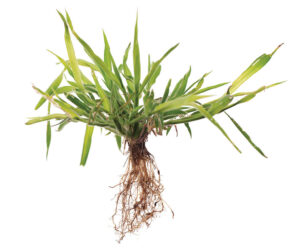Surveillance and strategies to manage HR weeds
Prairie surveys reveal that herbicide-resistant (HR) weeds are a widespread issue, and that predominant weed species and type of resistance vary by location. The Canola Research Hub’s “Scenario-specific options will improve herbicide-resistant weed management” blog at canolaresearch.ca investigated weed management, tapping into research found on the Hub and other helpful resources.
 Preliminary results from Charles Geddes’s “The next generation of Prairie herbicide-resistant weed surveys and surveillance” project reported Group-1 resistance in wild oat, green foxtail and yellow foxtail in a 2019-20 Saskatchewan survey and Group-2 resistance in wild oat, kochia, sow thistle species, wild mustard, stinkweed, redroot pigweed, false cleavers, shepherd’s purse, pale smartweed, lamb’s quarters, hemp nettle and chickweed. It also found wild oat with resistance to both Group 1 and 2. Geddes also confirmed the first glyphosate-resistant downy brome, which is the first glyphosate-resistant grass weed identified in Canada.
Preliminary results from Charles Geddes’s “The next generation of Prairie herbicide-resistant weed surveys and surveillance” project reported Group-1 resistance in wild oat, green foxtail and yellow foxtail in a 2019-20 Saskatchewan survey and Group-2 resistance in wild oat, kochia, sow thistle species, wild mustard, stinkweed, redroot pigweed, false cleavers, shepherd’s purse, pale smartweed, lamb’s quarters, hemp nettle and chickweed. It also found wild oat with resistance to both Group 1 and 2. Geddes also confirmed the first glyphosate-resistant downy brome, which is the first glyphosate-resistant grass weed identified in Canada.
Chris Willenborg’s “Quantifying the risks associated with late and sequential herbicide applications in herbicide-resistant canola systems” project concluded that (1) the response of canola to late and sequential applications was somewhat ambiguous, but highly dependent on herbicide-tolerant system, and that (2) off-label applications in the glyphosate-resistant (Roundup Ready) system can have substantial impacts on crop yield, yield components and even seed quality. This emphasizes that late, off-label applications should be avoided.
The “Biology and management of glyphosate-resistant kochia” study offered these recommendations:
- Since kochia that emerged early spring to mid-August could still produce viable seed before a killing fall frost, kochia needs to be controlled whenever it emerges in this timeframe.
- The kochia seedbank can be quickly reduced with vigilant action, as kochia was found to usually germinate or die within one to two years.
- Herbicides that are effective on regular kochia should also be effective on glyphosate-resistant kochia, based on this research.
- If canola is planned for a field with glyphosate-resistant kochia, it is recommended to grow Liberty Link, as glufosinate provides a consistent and high level of kochia control. Consider the use of ethalfluralin or carfentrazone to get other herbicide modes of action in the weed control program.
Findings from Breanne Tidemann’s “Mitigating herbicide resistance – investigating novel integrated weed management systems” project reported that early implementation of a integrated weed management (IWM) is critical. Waiting until resistance establishes could result in management failure and loss of control.
To get started: Identify the HR (and non-HR) weeds in each field, and consider herbicide product options for each crop in the rotation. Then work with an agronomist to make strategic selections on herbicide tolerance systems, herbicide groups (factoring in the use frequency each year and over the long term), modes of action and application timing options. Keep growing season records and then assess after each fall before making crop rotation and herbicide plans for next year.
Weed management resources
Try these helpful resources to support your integrated weed management strategy:
- Watch “Canola Group 2 weed management with Ian Epp” video at youtube.com/canolacouncil.
- Listen to Canola Watch podcast “Episode 72 on glyphosate resistance and IWM”. Find it through your podcast provider or find Podcast in the Quick Links box at canolawatch.org.
- Read “Top 10 herbicide resistant weed management practices” at wgrf.ca.
- Read the “Managing herbicide resistance in kochia” factsheet at manageresistancenow.ca.
- Read “Integrated weed management: Best practices” in the Weeds section at canolawatch.org/fundamentals.
- Find direct links in the November 10 blog post, “Scenario-specific options will improve herbicide-resistant weed management,” at canolaresearch.ca.




